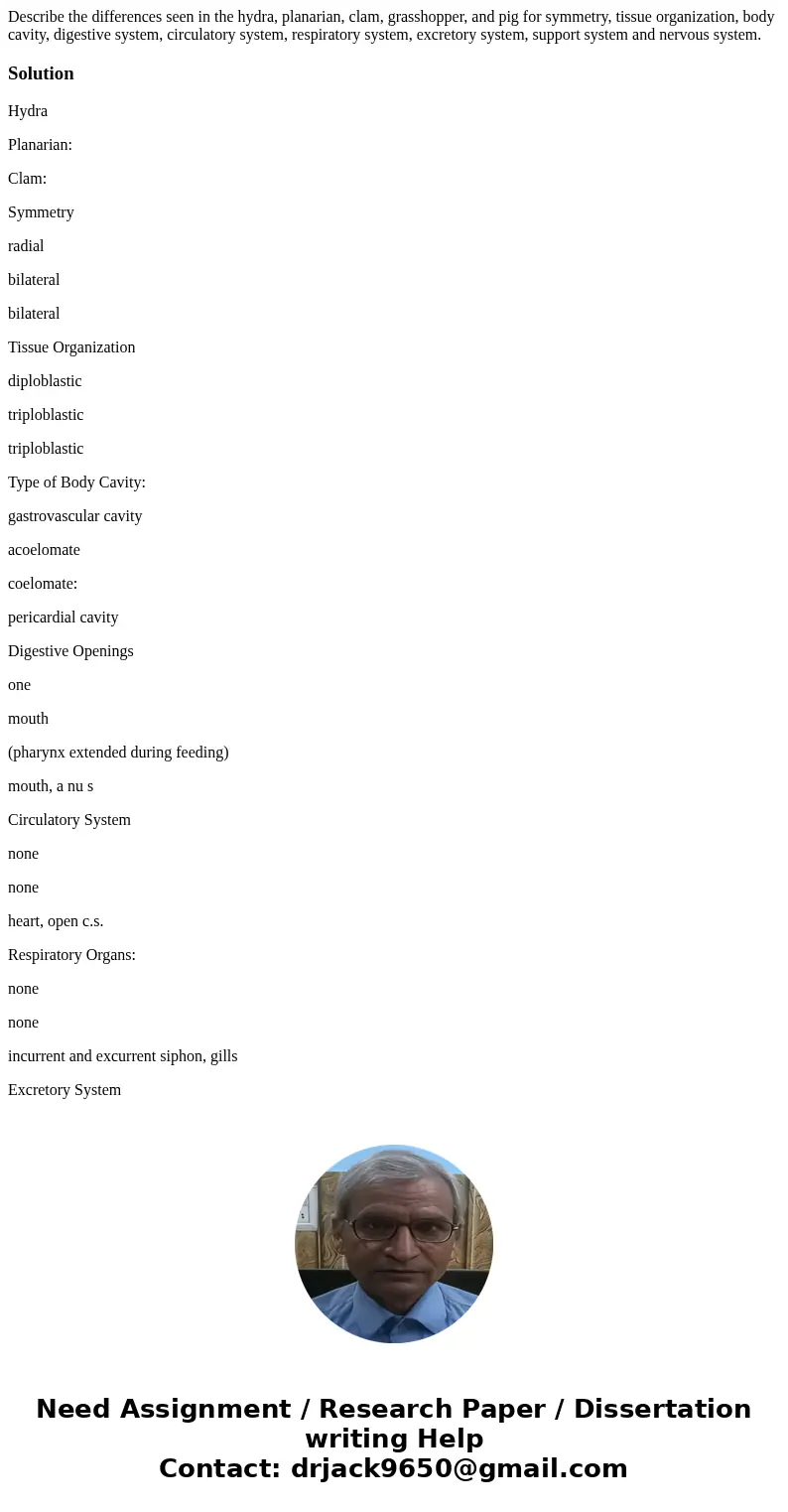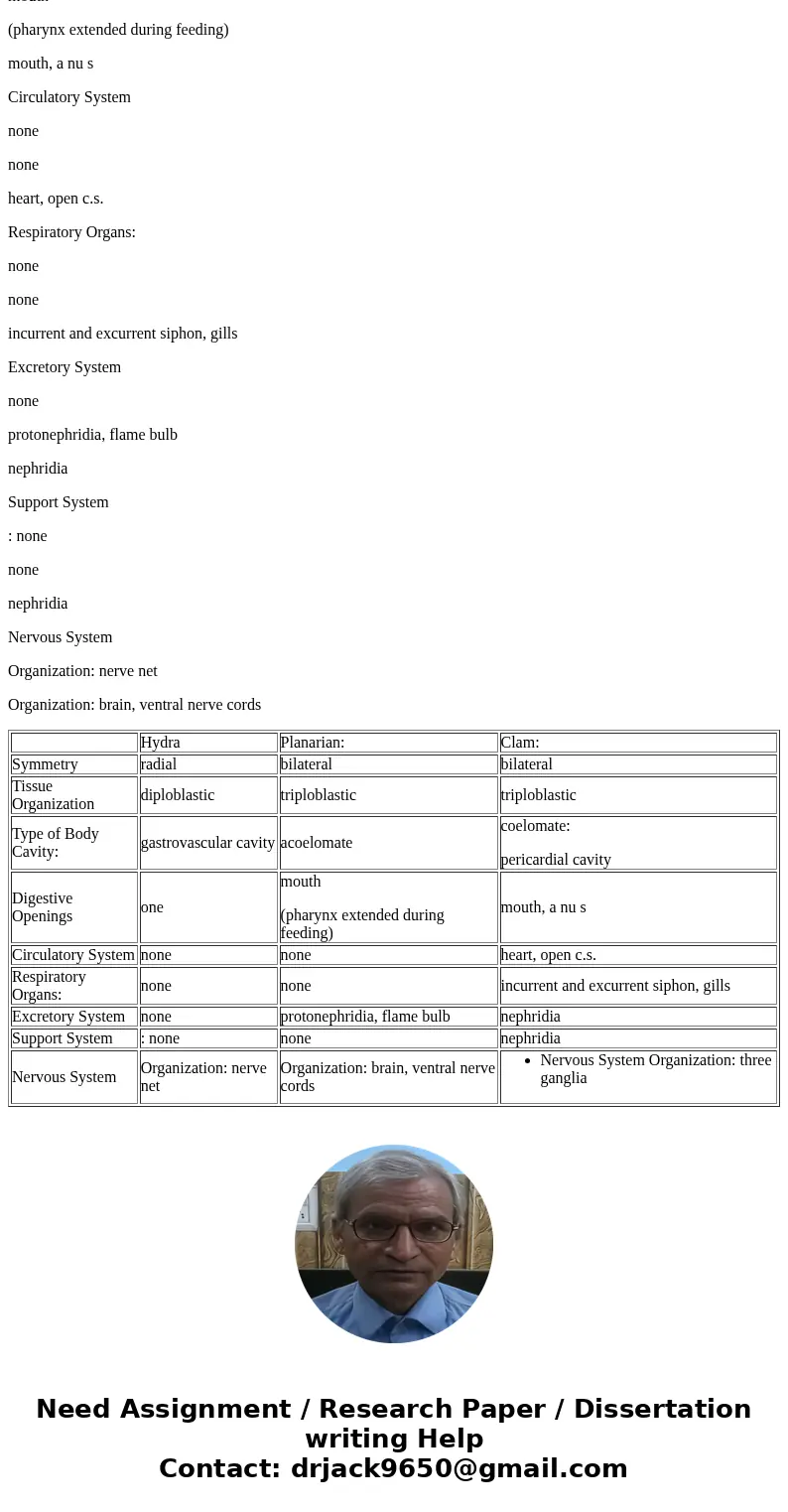Describe the differences seen in the hydra planarian clam gr
Solution
Hydra
Planarian:
Clam:
Symmetry
radial
bilateral
bilateral
Tissue Organization
diploblastic
triploblastic
triploblastic
Type of Body Cavity:
gastrovascular cavity
acoelomate
coelomate:
pericardial cavity
Digestive Openings
one
mouth
(pharynx extended during feeding)
mouth, a nu s
Circulatory System
none
none
heart, open c.s.
Respiratory Organs:
none
none
incurrent and excurrent siphon, gills
Excretory System
none
protonephridia, flame bulb
nephridia
Support System
: none
none
nephridia
Nervous System
Organization: nerve net
Organization: brain, ventral nerve cords
| Hydra | Planarian: | Clam: | |
| Symmetry | radial | bilateral | bilateral |
| Tissue Organization | diploblastic | triploblastic | triploblastic |
| Type of Body Cavity: | gastrovascular cavity | acoelomate | coelomate: pericardial cavity |
| Digestive Openings | one | mouth (pharynx extended during feeding) | mouth, a nu s |
| Circulatory System | none | none | heart, open c.s. |
| Respiratory Organs: | none | none | incurrent and excurrent siphon, gills |
| Excretory System | none | protonephridia, flame bulb | nephridia |
| Support System | : none | none | nephridia |
| Nervous System | Organization: nerve net | Organization: brain, ventral nerve cords |
|


 Homework Sourse
Homework Sourse